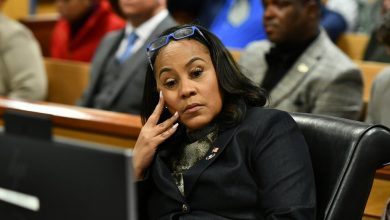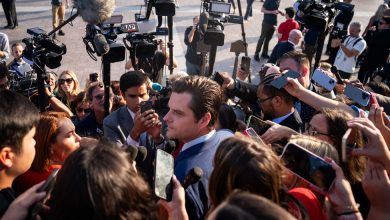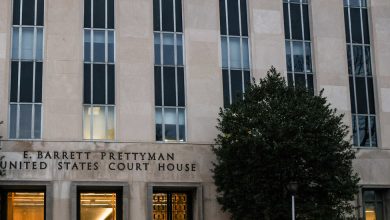What We Know About the Political Turmoil in Peru

Peru has been convulsed in recent years by political turmoil, rapid turnovers of presidents and constant scandals and investigations. But Wednesday was perhaps one of the most tumultuous days in the country’s recent history.
Congress had scheduled an afternoon vote on whether to impeach the president, Pedro Castillo, on corruption charges. But, the president, seeking to thwart the vote, announced the dissolution of Congress and the installation of an emergency government, in what was quickly and widely condemned as a coup attempt.
The move shocked even the president’s allies, and by day’s end, Mr. Castillo had been removed from office and was under arrest. Dina Boluarte, his vice president, became president, the first woman to lead Peru.
The political drama is the latest challenge for the country’s young democracy, but it is also, perhaps, a sign of its resilience.
Here is what we know so far.
Who is Pedro Castillo?
Mr. Castillo, 53, who was elected president last year, was born to parents who were illiterate farmersin an impoverished, rural region without sewage and a lack of access to health care and schools.
Even after Mr. Castillo became a teacher, he farmed to supplement his income. He became a union activist, helping to organize a strike for better pay for teachers.
Mr. Castillo, a socialist, appealed to voters frustrated with the political establishment.
He campaigned on the slogan “No more poor people in a rich country” and on the promise of improving the country’s economy and reducing its chronic inequality. High poverty rates have also gotten worse during the coronavirus pandemic, rising by about 10 percent, one of the steepest increases not just in Latin America but in the world, according to Hugo Nopo, a senior economist at the World Bank.
But though he cast himself as a clean break from the country’s corrupt past, he quickly became embroiled in scandal and failed to keep many of his promises.
Why was he facing impeachment?
For years, Peru has been hobbled by political corruption that has led to six presidents since 2016. Mr. Castillo’s tenure only worsened the sense of political dysfunction.
What to Know About the Ousting of Peru’s President
Who is Pedro Castillo? The left-wing Peruvian president was elected in 2021 after campaigning on a promise to address the country’s chronic inequality. But in less than a year and a half in office, Mr. Castillo has been plagued by corruption scandals. Peru’s Congress voted to oust him after critics accused him of attempting a coup.
What led to his removal? Prosecutors accused Mr. Castillo of leading a criminal organization to profit from government contracts and of obstructing justice. Hours before Congress was scheduled to vote on impeachment, Mr. Castillo announced the dissolution of Congress and the installation of an emergency government to rule by decree.
What happened next? Mr. Castillo’s announcement prompted the mass resignation of much of his government and a statement from Peru’s armed forces and the police suggesting that he did not have the legal authority to carry out his decree. In a swift vote hours after his announcement, Congress voted to impeach him and remove him from office.
What does this mean for Peru? Vice President Dina Boluarte will now lead the country’s fragile democracy through its biggest political crisis in years. The crisis comes as Peru’s inflation rate is at its highest point in decades, raising the stakes of political dysfunction in a nation where a quarter of the population of 33 million lives in poverty.
He named five different cabinets and cycled through more than 80 ministers, some of whom lacked relevant skills or experience and faced investigations related to corruption, domestic violence and murder.
Mr. Castillo himself was the target of six criminal investigations, including over accusations that he led a criminal organization to profit off government contracts and claims he repeatedly obstructing justice.
He denied the charges, and some of his supporters say that he was the victim of a concerted effort to reinstate the former ruling elites.
Federal lawmakers had tried to impeach Mr. Castillo twice before, and the third vote was planned after he earlier threatened to dissolve Congress.
What happened when Mr. Castillo tried to suspend Congress?
Soon after Mr. Castillo announced his decision to short-circuit Congress in a nationally televised address, it became apparent that his attempt to effectively seize power lacked much support.
The armed forces and the police rejected Mr. Castillo’s move, top government officials resigned in quick succession, law experts called his effort illegal, and even the president’s former personal lawyer chastised him. The United States also joined the chorus of dissent.
Two hours after Mr. Castillo’s announcement, Congress voted to impeach him, with 101 lawmakers supporting his removal, six opposing and 10 abstaining.
Mr. Castillo was seen on Wednesday afternoon on televised images leaving the presidential palace in a car that later entered a police station. As he was held there, Ms. Boluarte was sworn in as Peru’s new leader.
Later on Wednesday, the prosecutor’s office said it had ordered his arrest on charges of “rebellion.” The police said he was being held at a naval base on the outskirts of Lima.
Who is Peru’s new president?
Ms. Boluarte, 60, is a former lawyer who was a member of a Marxist political party until she was pushed out last year after criticizing the party’s leader.
Ms. Boluarte comes from a rural area of Peru, and she ran on Mr. Castillo’s ticket last year, serving as vice president and as his minister of development and social inclusion. She resigned from her ministerial role last month, after Mr. Castillo formed his most recent cabinet.
“I am from the deep country; I was born and raised in a small town in Peru,” Ms. Boluarte said after she was sworn in, referring to Chalhuanca, Apurímac, her hometown, high in the Andes. “I am the last daughter of a large family, a family that lived in precariousness.”
Is this a victory for democracy?
The turmoil in Peru reflects similar patterns across South America, with democracies plagued by poverty, inequality and corruption being tested by rising populism and a general distrust of the political elite.
And much like that in other countries, including Brazil and Colombia, Peru’s democracy, though fragile, has proved resilient. Some leftist leaders in the region criticized Mr. Castillo’s actions.
The U.S. ambassador to Peru, Lisa Kenna, in an interview on Thursday, called the response to Mr. Castillo’s attempt to dissolve Congress a “win for democracy in Peru.”
José Carlos Requena, a Peruvian political analyst, wrote in El Comercio, a Peruvian newspaper, that Congress “has been able to give a constitutional channel to the difficulty.”
Still, some experts warned against celebrating an institutional victory, arguing that Mr. Castillo’s failed attempt to seize power was perhaps more the result of his inability to galvanize support rather than the strength of democratic norms.
Much will rest on how Ms. Boluarte’s government navigates the country’s political and economic challenges.
“Since the new president was sworn in, there has been a kind of relief, of calm, but a calm that could be short-lived,” said Roxana Barrantes, a professor at the Pontifical Catholic University of Peru.
What challenges does Peru face?
A quarter of Peru’s 33 million people live in poverty. The United Nations in November warned that the country had the highest rate of food insecurity in South America, with half the population lacking regular access to sufficient nutrition.
“The most important challenge is that of shared prosperity,” said Mr. Nopo, the World Bank economist. “We are a country that has been characterized by good macro stability, but it still has serious challenges in making this macro bonanza as inclusive as would be desirable.”
The pandemic and the war in Ukraine have contributed to a huge increase in prices for basic goods and other essential products, including fertilizer, setting off widespread protests.
Mining, a key part of the economy, has been a driver of the country’s growth over the past two decades, but it is also a major source of pollution and contributes to climate change.
Chronic corruption has affected the highest echelons of power. Three presidents in recent years were forced from office after corruption accusations.
Mr. Castillo is the sixth former president to face prison time this century: Alberto Fujimori is serving time in prison; Ollanta Humala and his wife spent nine months in preventive prison; Pedro Pablo Kuczynski spent three years under house arrest; Alan García died by suicide moments before a prosecutor arrived to his home to arrest him; and Alejandro Toledo is awaiting extradition from the United States to face corruption charges.
The rapid succession of presidents is also a symptom of institutional instability, and Congress is one of the least-trusted institutions in the country, according to a recent poll.
Was this turmoil new for Peru?
Mr. Castillo’s efforts to dismantle Congress had echoes from the past.
Thirty-two years ago,Mr. Fujimori, another anti-establishment outsider, was elected president. He came to power as hyperinflation ravaged Peru’s economy and left-wing rebel groups carried out terror campaigns during which tens of thousands of people were killed.
Two years after his election, Mr. Fujimori staged a coup with the support of the military, suspended the Constitution and ruled as a dictator.
During his government’s counterinsurgency campaign, dozens of civilians died in extrajudicial killings at the hands of death squads that prosecutors said Mr. Fujimori had created.
In 1995, he was re-elected and restored democratic rule, but his government came under growing criticism and was accused of the continued massacre of civilians and corruption. He resigned in 2000.
In 2009, Mr. Fujimori received a 25-year prison sentence for human rights abuses.
His daughter Keiko Fujimori, narrowly lost last year’s presidential election to Mr. Castillo.
Elda Cantú contributed reporting.





